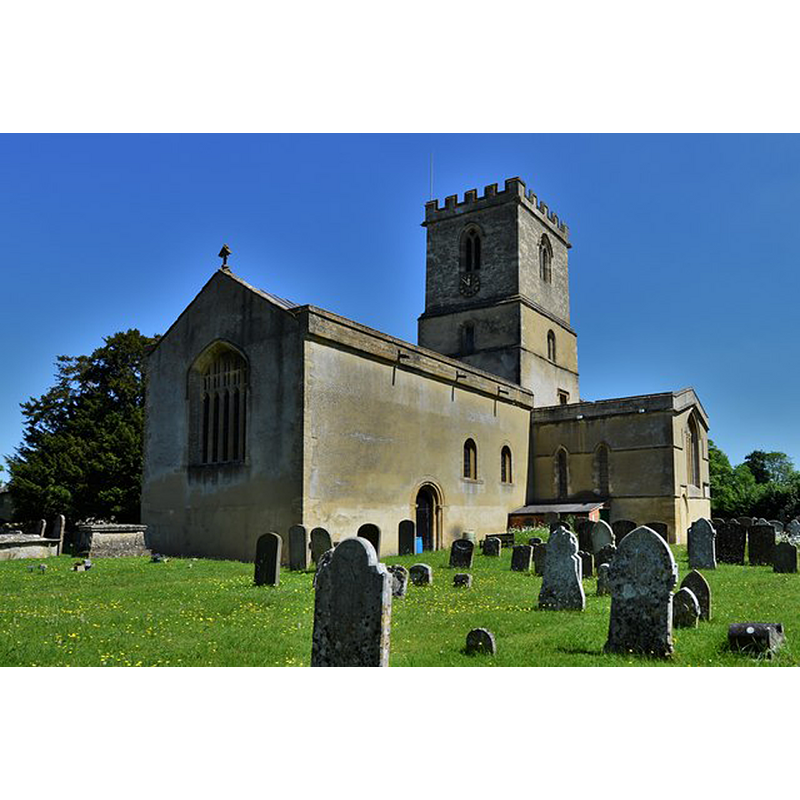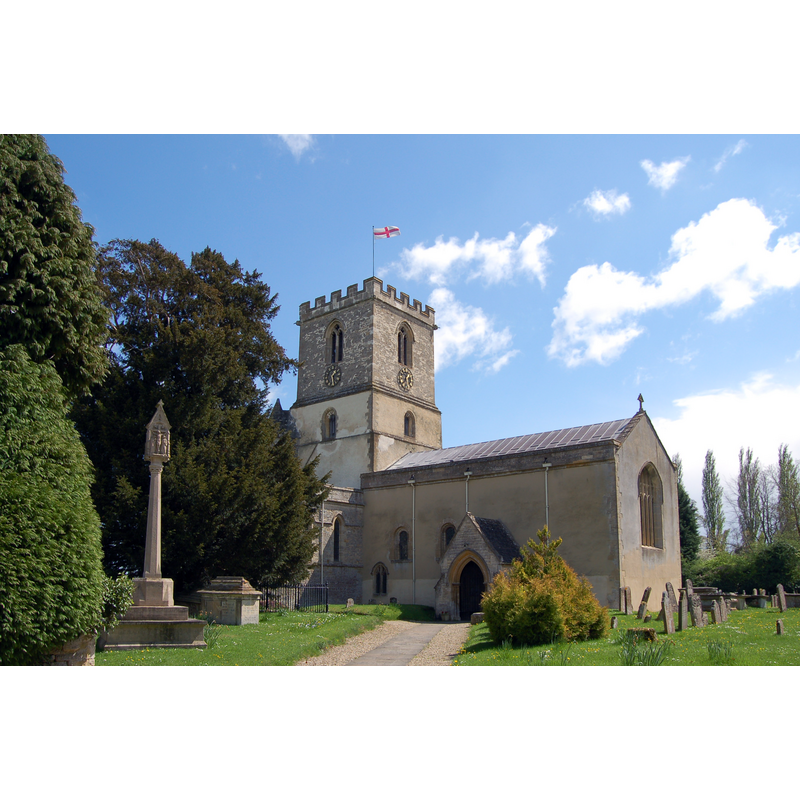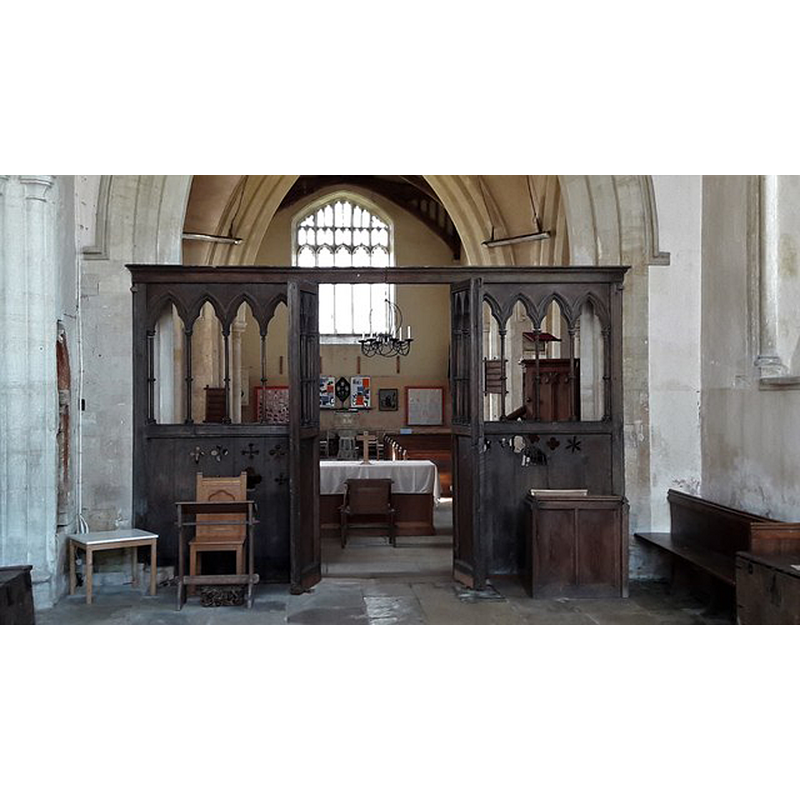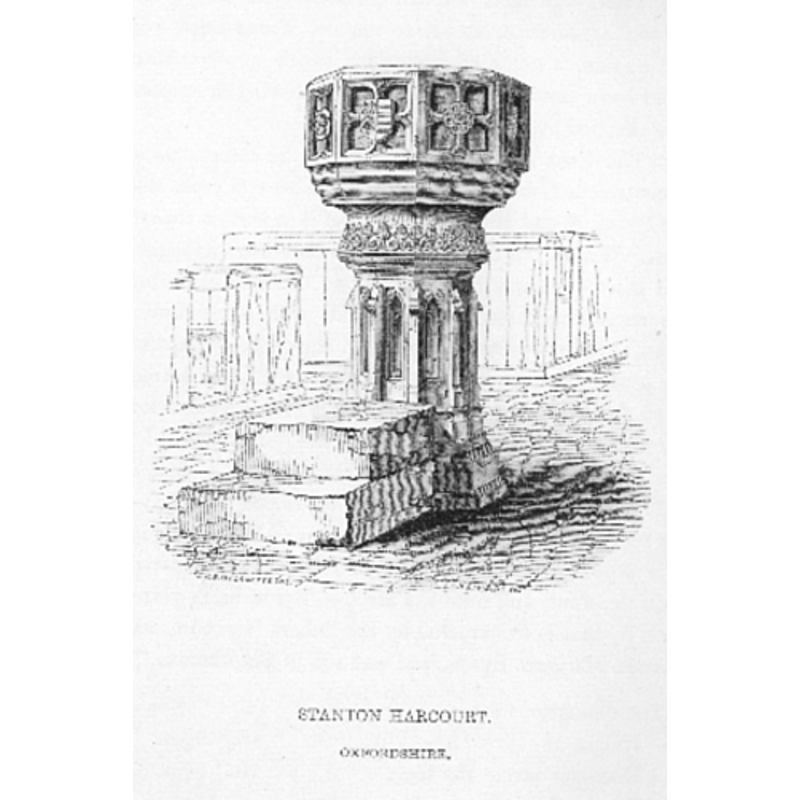Stanton Harcourt No. 1 / Stantone
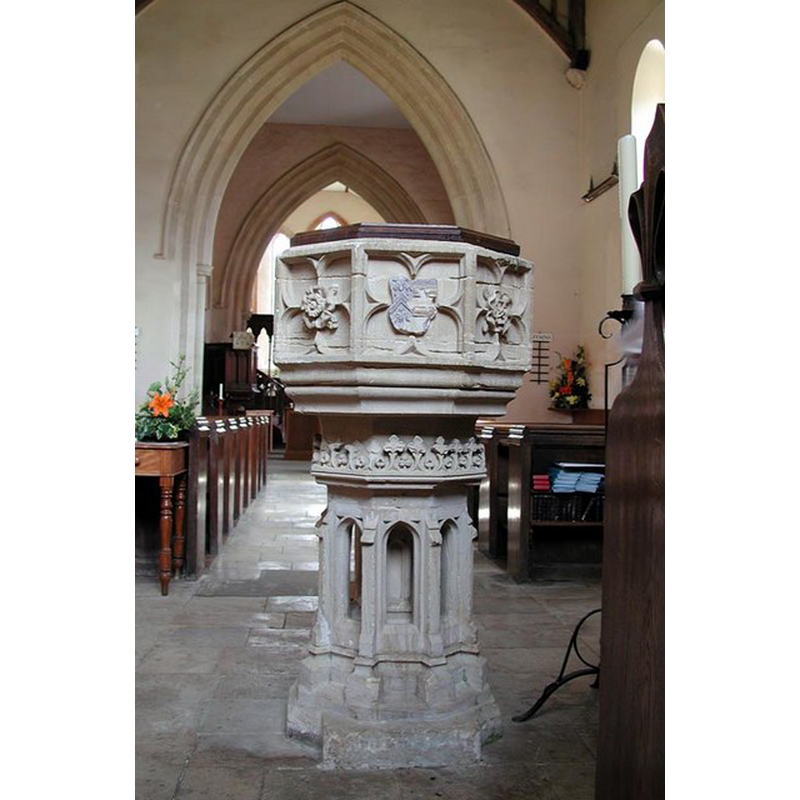
Image copyright © John Salmon, 2009
CC-BY-SA-2.0
Results: 15 records
coat of arms - Byron
coat of arms - Francis impaling Harcourt
design element - architectural - arcade - blind - 8 arches - Gothic arches
Scene Description: One arch on each side of the stem of the base, separated by buttresses
Copyright Statement: Image copyright © John Salmon, 2009
Image Source: digital photograph taken 31 May 2003 by John Salmon [www.geograph.org.uk/photo/1610918] [accessed 29 November 2017]
Copyright Instructions: CC-BY-SA-2.0
design element - motifs - floral - Tudor flower
Scene Description: a continuous pattern of such flowers all around the centre "ring" between the basin and the stem of the base
Copyright Statement: Image copyright © John Salmon, 2009
Image Source: digital photograph taken 31 May 2003 by John Salmon [www.geograph.org.uk/photo/1610411] [accessed 29 November 2017]
Copyright Instructions: CC-BY-SA-2.0
design element - motifs - floral - in a quatrefoil
design element - motifs - floral - rosette - in a quatrefoil
symbol - cross - initials
Scene Description: Gothic letters K and R at either the side of a cross -- seen here in the leftmost panel of the basin
Copyright Statement: Image copyright © John Salmon, 2009
Image Source: digital photograph taken 31 May 2003 by John Salmon [www.geograph.org.uk/photo/1610411] [accessed 29 November 2017]
Copyright Instructions: CC-BY-SA-2.0
view of church exterior - northeast view
view of church exterior - southeast view
view of church interior - chancel - rood-screen, choir-screen; iconostasis
Scene Description: Source caption: "The chancel screen in St Michael's church, Stanton Harcourt. A rare treat, a genuine early Gothic screen dating from about the same time as the chancel, the middle of the 13th century."
Copyright Statement: Image copyright © Chris Brown, 2017
Image Source: digital photograph takeb 25 March 2017 by Chris Brown [www.geograph.org.uk/photo/5549734] [accessed 29 November 2017]
Copyright Instructions: CC-BY-SA-2.0
view of church interior - nave - looking east
view of font
view of font and cover
INFORMATION
FontID: 01193STA
Object Type: Baptismal Font1
Church/Chapel: Parish Church of St. Michael
Church Patron Saints: St. Michael
Church Location: Main Road, Stanton Harcourt, Oxfordshire, OX29 5RJ
Country Name: England
Location: Oxfordshire, South East
Directions to Site: Located off (E) the B4449, 12 km W of Oxford
Ecclesiastic Region: Diocese of Oxford
Historical Region: Hundred of Wootton
Font Location in Church: Inside the church, in the W end, N side
Century and Period: 15th century, Perpendicular
Workshop/Group/Artisan: heraldic font
Font Notes:
Click to view
There is an entry for Stanton [Harcourt] [variant spelling] in the Domesday survey [http://opendomesday.org/place/SP4105/stanton-harcourt/] [accessed 29 November 2017], but it mentions neither priest nor church in it. There is a 1773 ink-wash-on-paper drawing of this font by Samuel Hieronymus Grimm (1733-1794) in the British Library collections [Shelfmark: Additional MS 15546 - Item number: f.62]. An engraving of this font appears in 'Skelton's engraved illustrations of the principal antiquities of Oxfordshire', in 1823. Tymms (1834) qualifies it simply as "elegant". Description by the Rev. Thomas Simonds, vicar of Stanton Harcourt's St. Martin's circa 1844 : "The Font is octangular; is of the compartments is quatrefoiled, except the front, which bears a cross with the letters K and R on either side of it in Gothic characters. Within two of the large quatrefoils are two smaller and more enriched; within the two other a rose; and the remaining three contain shields with the following arms. Byron--Francis impaling Harcourt--Harcourt. By a strange error to have been committed in an age when the science of heraldry was held in high estimation, the arms of Francis are placed on the dexter instead of the sinister side. Sir Thomas Harcourt, who died in 1460, married Joan, daughter of Sir Robert Francis; --but no female of the former family married into the latter. It is probable, from the style of the ornaments carved upon the Font, and from the arms of Byron being paced upon it, that it was erected by Sir Robert Harcourt, who married Margaret Byron, and was son of Sir Thomas." (Paley, 1844). Paley acknowledges the said vicar for having had the font cleaned of "the numerous coats of whitewash which nearly obliterated its ornaments till 1833." (ibid.). Described in the Guide to the Architectural Antiquities in the Neighbourhood of Oxford (1846: 175): "The Font is good Perpendicular, tal octagon panelled, with buttresses at the angles, with the Tudor ornaments, and the emblems of the Crucifixion on one of the panels, IHC on another, and the arms of Byron on another. This Font was carefully restored in 1833, but the original ornaments with their painting were preserved and placed on a tablet under the west window". In the historical notes of this same source (ibid., p. 178) it adds: "The Font is octagonal; on the front is a cross, with letters in the Gothic character on either side of it. In each of the compartments are spred quatrefoils, except that on which there is a cross: within two of the large quatrefoils are two smaller, and more enriched; within the two others, a rose; and the remaining three contain shields, with the following arms: Byron; Francis impaling Harcourt; Harcourt [...]" Sherwood and Pevsner (1974) state that the font was "made in 1833 and said to be a copy of the original. - Heraldic shields from the C15 font are on the W wall." [NB: the font shows signs of reconstruction which may have led Sherwood & Pevsner to believe it is a copy]. The Victoria County History (Oxford, vol. 12, 1990) Notes: "A church existed by 1135, when the parish included Northmoor and South Leigh; both the size of the parish and scale of the church suggest that Stanton Harcourt was a preConquest ecclesiastical centre [...] The spacious nave [...] is of the 12th century [...] The 15th-century font formerly incorporated heraldic arms, probably of Sir Robert Harcourt (d. 1470); it was restored in 1833, when fragments of damaged carving were transferred to a tablet on the west wall of the nave." [cf. Index entry for Stanton Harcourt No. 2 for a holy-water stoup of the Norman period in this church]
COORDINATES
Church Latitude & Longitude Decimal: 51.7483, -1.3975
Church Latitude & Longitude DMS: 51° 44′ 53.88″ N, 1° 23′ 51″ W
UTM: 30U 610625 5734259
MEDIUM AND MEASUREMENTS
Material: stone, type unknown
Font Shape: octagonal (mounted)
Basin Interior Shape: round
Basin Exterior Shape: octagonal
Diameter (includes rim): 69.5 cm
Basin Depth: 27.5 cm
Font Height (less Plinth): 144 cm
Notes on Measurements: Paley (1844: unpaged)
INSCRIPTION
Inscription Language: letters
Inscription Notes: [cf. FontNotes]
Inscription Location: each set on a basin panel
Inscription Text: "IHC" / K R
Inscription Source: [cf. FontNotes]
LID INFORMATION
Date: modern?
Material: wood, oak?
Apparatus: no
Notes: octagonal, flat and plain; modern?
REFERENCES
Victoria County History [online], University of London, 1993-. Accessed: 2011-10-28 00:00:00. URL: https://www.british-history.ac.uk.
Cox, John Charles, English Church Furniture, New York: E.P. Dutton & Co., 1907
Crossley, Frederick Herbert, English Church Craftsmanship: an Introduction to the Work of the Mediaval Period and Some Account of Later Developments, London: B.T. Batsford, 1941
Oxford Society for Promoting the Study of Gothic Architecture, Guide to the Architectural Antiquities in the Neighbourhood of Oxford, A, Oxford: John Henry Parker [for the Society], 1846
Paley, Frederick Apthorp, Illustrations of Baptismal Fonts, London, UK: John van Voorst, 1844
Pevsner, Nikolaus, Oxfordshire, Harmondsworth: Penguin Books, 1974
Skelton, Joseph, Skelton's engraved illustrations of the principal antiquities of Oxfordshire, from the original drawings of F. Mackenzie, Oxford: J. Skelton, 1823
Tymms, Samuel, Family Topographer, being a compendious account of the antient and present state of the counties of England: vol. IV, Oxford circuit, London: Nichols & Son, 1834
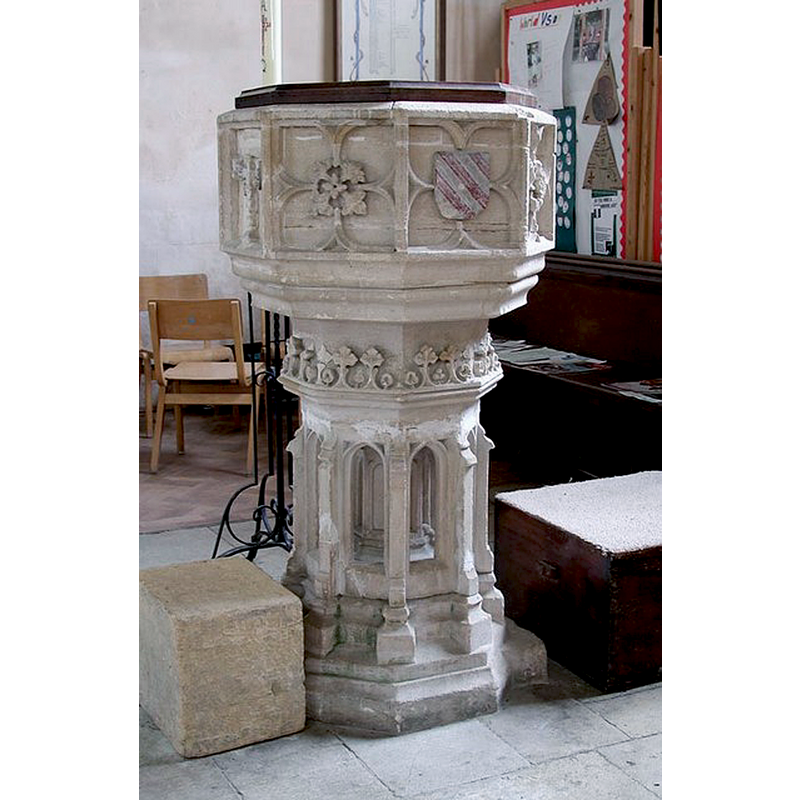
![[cf. Font notes]](/static-50478a99ec6f36a15d6234548c59f63da52304e5/others/image_not_available.jpg)
![[cf. Font notes]](/static-50478a99ec6f36a15d6234548c59f63da52304e5/bsi-testing-site/others/image_not_available.jpg)
